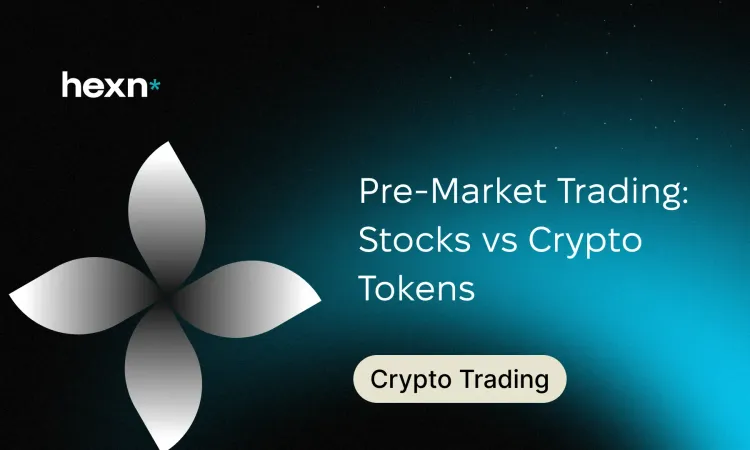Pre-Market Trading: Stocks vs Crypto Tokens
Pre-market trading describes buying and selling activity that happens before an exchange’s regular hours — and in crypto it also refers to trading tokens before they are officially listed. Understanding how these sessions work helps traders spot early price signals and manage risk when markets reopen.
How Stock Pre-Market Trading Works
On traditional exchanges, pre-market sessions run in the hours ahead of the official opening. Orders placed during this time are matched through electronic networks that operate outside core trading hours. Because fewer participants are active, prices found in these sessions can set the tone for the full trading day by signalling how the market may react to overnight news or company announcements.
For example, if a company reports stronger-than-expected quarterly results after the close, buyers may step in during pre-market hours. That early demand can push the share price higher before regular trading begins, giving investors a preview of market sentiment.
Where Price Discovery Happens in Pre-Market Hours
Pre-market trades contribute to price discovery by reflecting the reactions of available participants to new information. However, because trading volumes are typically lower, prices may move more abruptly and may not fully reflect the broader market until regular hours bring in more buyers and sellers.
What Is Crypto Pre-Market Trading?
Crypto markets run around the clock, so the phrase “pre-market” is used differently. In crypto, it often refers to marketplaces where tokens are exchanged before they are officially listed on major trading venues or before broad distribution. These platforms let early investors trade allocations or tokens that are still in the distribution phase.
Such activity can take place on peer-to-peer platforms, decentralized marketplaces, or through custodial services provided by centralized platforms. Early trading gives participants a chance to form a price expectation for a token prior to its public listing, but the environment can be highly speculative.
How Early Token Trades Create Initial Values
When a project announces a token allocation or an initial sale, participants may begin buying and selling those tokens ahead of wider availability. That pre-listing liquidity helps establish an initial market price, but it also means valuations are shaped by a smaller, often more informed or motivated group of traders.
Benefits of Trading Before the Market Opens
Early Insight into Market Direction
Trading in pre-market hours can reveal how the market is likely to respond to new information. Those early price movements can be useful signals for forming strategy before the main session begins.
Time to Adjust Positions
Pre-market access allows traders to modify holdings in response to events that occur outside regular hours. This can be especially useful for managing exposure to overnight news or anticipated announcements.
Greater Flexibility for Global Traders
Extended trading windows suit investors in different time zones or those with schedules that don’t match exchange opening times. In crypto, the always-on nature of markets further increases accessibility for anyone who wants to trade early.
Key Risks to Consider
Lower Liquidity and Wider Spreads
One of the biggest downsides of pre-market activity is reduced liquidity. With fewer participants, bid-ask spreads can widen and it may be harder to enter or exit large positions without moving the price.
Limited Participation Can Skew Pricing
Because institutional traders and market makers are often less active before open, prices may reflect the behavior of a narrow group. That can produce price moves that reverse once regular trading attracts a larger, more diverse pool of participants.
Higher Volatility and Execution Uncertainty
Smaller order books and sudden reactions to news can amplify volatility. Slippage and unexpected fills are more likely, so execution risk is an important consideration for anyone trading outside normal hours.
Practical Takeaways
Pre-market sessions—whether in stocks or crypto tokens—offer early signals and the chance to act ahead of the crowd. However, they also come with lower liquidity, larger spreads, and greater price uncertainty. Traders should size positions conservatively, use limit orders where possible, and be prepared for outcomes that may change once the wider market becomes active.
In short, pre-market trading can be a useful tool for early price discovery and strategy adjustment, but it requires careful risk management and an awareness that early prices don’t always hold once full-market participation resumes.
